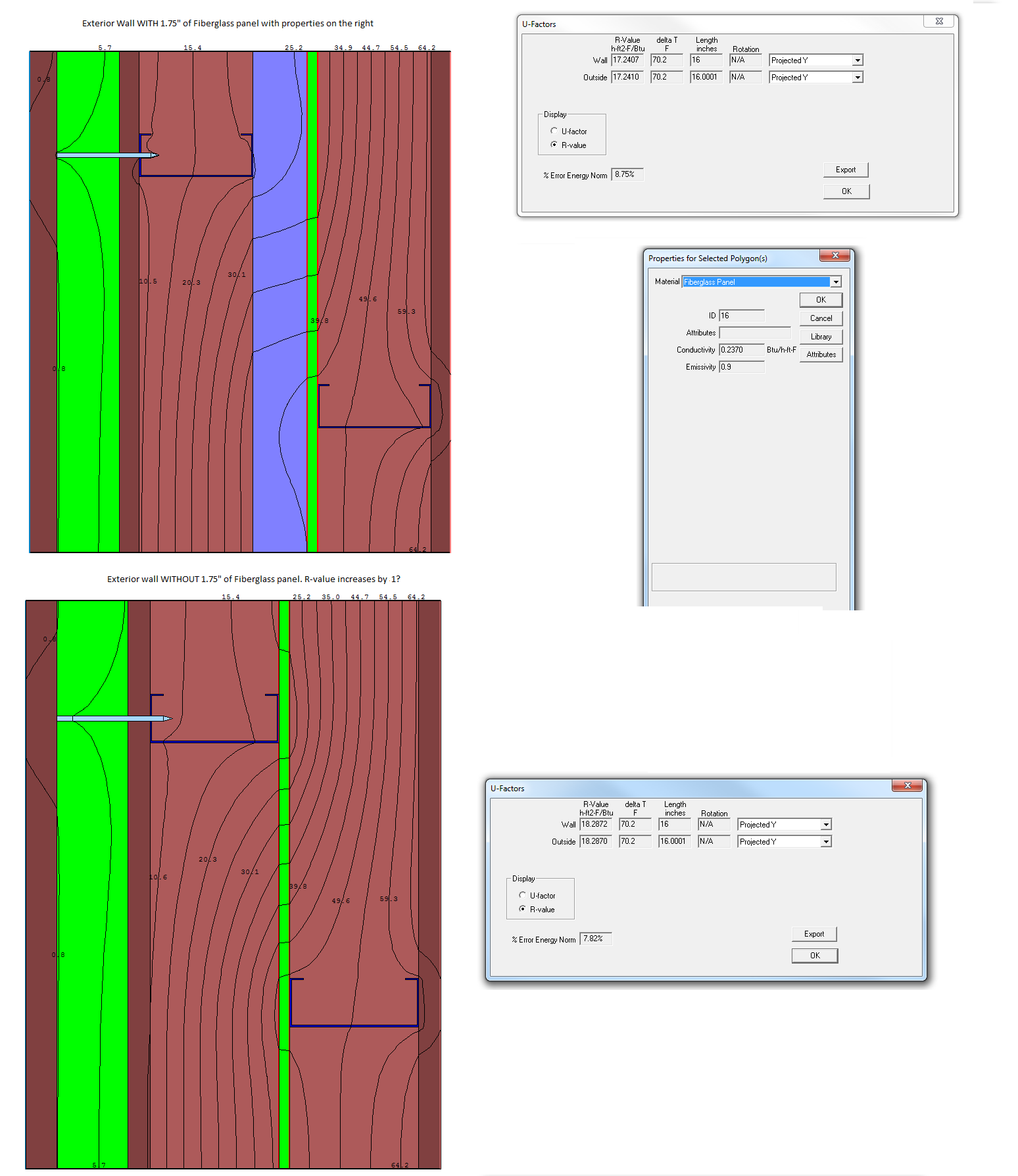THERM: Added Material Layer, R-Value decreased
Hello,
I am fairly new to THERM and am a little bit confused about an analysis I am performing. I took away a layer from a construction to test how much resistance that layer was giving, but the resulting assembly had a higher thermal resistance. I don't understand how this would be possible. See image below describing issue. The image is coming in a bit too small to see, so if you click the attached image you can see a larger, clearer version of it. The purple layer, a fiberglass bullet resistant material, is the what I removed. I've checked that the materials and that the boundary layers are the same for both walls (except the layer removed from the bottom wall).
The layers of the top wall are as follows: Stucco, Exterior Insulation, Gypsum, 3.625 stud with insulation, Fiberglass bullet proofing, Air gap, 3.625 stud with insulation, Gypsum.
The layers of the bottom wall are as follows: Stucco, Exterior Insulation, Gypsum, 3.625 stud with insulation, Air gap, 3.625 stud with insulation, Gypsum.
I've checked that the materials and that the boundary layers are the same for both walls. I've already posted this on the THERM forum and haven't had much luck. Anyone have any ideas on what I may be doing wrong?

Thanks!



